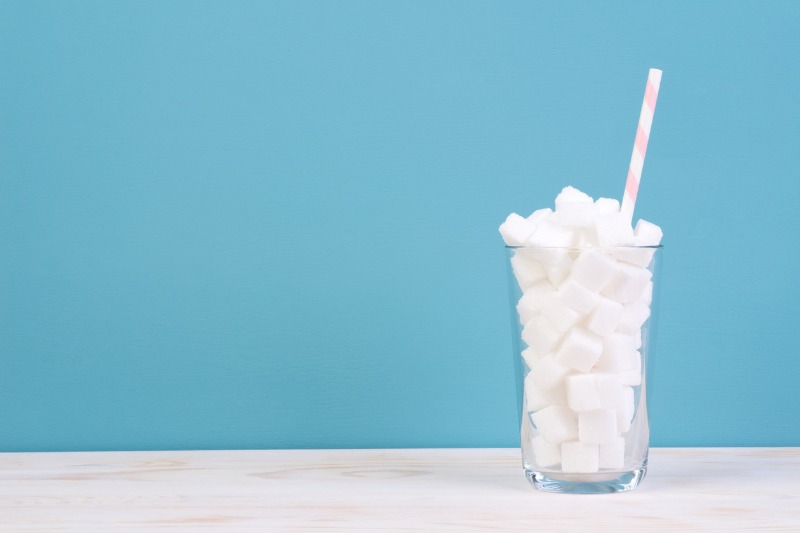How Sweet It Is

By Tryna Giordano Cooper
While sitting down to write another article on health and well-being, I was thinking about maintaining balance in the body, business, and life and noticed myself thinking of something sweet to eat or drink.
Dismissing it and returning to my thoughts of writing, the craving for something sweet showed up again. Why?
I realized that, during the recent holidays, my life had been full of sweets. While I do like to think that I pay attention to what I eat, I realized I had been eating sugar more than normal, and now my body (and maybe my mind) thinks it’s the norm. So, I decided a little discussion of sugar and sugar substitutes was in order.
Sugar, in its many forms, is found in much of our food, especially processed foods. Some sugar comes from natural sources like fruits and vegetables, and some is manufactured. Sometimes we don’t even realize we are eating sugar because it is hidden so effectively, and many times we don’t or learn about it until we have a health crisis: Excess weight, heart issues, and diabetes — to name a few.
Let’s learn a little bit about sugar, sugar substitutes, and the body.
Sugar, substitutes, and artificial sweeteners
Simply put, sugar is sweet, water-soluble carbohydrate that can come from a number of different places and in many different forms. Monosaccharides, or “simple sugars,” including glucose, are known as dextrose, fructose, and galactose. Disaccharides include granulated sugar, known as sucrose (a combination of glucose and fructose), maltose (from malted grain), and lactose (from milk). Longer chains of sugars are called oligosaccharides or polysaccharides.
Sugar substitutes, generally speaking, consist of anything you use to sweeten food or drinks in place of regular sugar. Naturally occurring sugar substitutes include honey or agave nectar. Sugar substitutes produced synthetically are what we refer to as artificial sweeteners — think Equal, Sweet ‘N Low, and Splenda.
Sucralose (Splenda), a chlorinated derivative of sucrose, was the most common sugar substitute used in food and drink manufacturing in 2017. Other artificial sweeteners include aspartame (Equal), neotame, acesulfame potassium (Sweet One), saccharin (Sweet ‘N Low), and advantame. Cyclamates are prohibited from manufacturing in the United States but are used outside the U.S. Sugar alcohols like sorbitol, xylitol, and lactitol, which are created by catalytic hydrogenation, are most often used in food products.
The most common plant-based sugar substitutes are stevia leaf extract, which is “natural” but still refined, and monk fruit extract (Luo Han Guo).
Where is all that sugar hiding? The list of sugars goes on: Agave syrup, barley malt, beet sugar, brown rice syrup, brown sugar, buttered syrup, cane sugar, cane juice, corn syrup, corn sugar, corn sweetener, crystalized fructose, dextran, diatase, golden sugar, grape sugar, invert sugar, malt, maltodextrin, maltose, maple syrup, molasses, raw sugar, sucanat, yellow sugar.
So, why is this important to know? If you are trying to cut back on eating sugar, you may have to look a little closer at the food labels.
Sugar and the body
The truth is sugar is a carbohydrate, and the body uses carbohydrates for energy. When you eat sugars, the body either converts it into energy or fat, which is stored in your fat cells for use later.
Carbohydrates are the body’s most important source of energy and a necessary part of a healthy diet. The two main forms of carbohydrates are simple carbohydrates (or “simple sugars” including fructose, glucose, and lactose, which are found in nutritious whole fruits) and complex carbohydrates (or “starches” including corn and other high-starch vegetables as well as rice, whole grains, etc.).
All carbohydrates are broken down into simple sugars when the body digests food and drink, which are then absorbed into the bloodstream. As the sugar level in the blood rises, the pancreas releases the hormone insulin (the body’s sugar regulator), which is needed to move sugar from the blood into the cells. Once in the cells, the sugar can be used as energy, immediately or at a later date.
Foods that contain simple sugars and highly refined grains, such as white flour and white rice, are easily broken down and cause blood sugar levels to rise quickly. Foods that contain complex carbohydrates, such as those found in whole grains, are broken down more slowly, allowing blood sugar to rise gradually.
Problems with sugar arise because of the high levels of refined sugar (simple sugar) content in foods. When eaten, the body gets a rush of sugar that it is not necessarily prepared to process. When too much sugar is consumed at once, there can be too much insulin released, which causes the blood sugar level to drop. The body then calls out for more sugar (what we’d call “cravings”), and we eat more.
Eventually the body responds by storing sugar in fat cells for later use instead of using the sugar for immediate energy. A diet that’s high in foods that cause a rapid rise in blood sugar, therefore, creates spikes in insulin fat cell storage, creating problems in the body’s functioning.
Overconsumption of processed sugars can lead to the development of health problems like obesity, cardiovascular disease, diabetes, kidney disease, and more.
Is your issue too much sugar?
Sugars can enter your diet naturally or can be added during production, according to the American Heart Association. Sugars show up naturally in things like fruit and milk, or they can be added during food and beverage manufacturing or at home.
An important fact to remember is that four grams of sugar is the same as one teaspoon of sugar. The American Heart Association recommends limiting the amount of added sugar consumed each day by women and children to less than 25 grams, by men to less than 36 grams, and infants and toddlers to zero.
To put this into perspective, some common beverages you might pick up at the store have the following added sugar content:
- 12 oz. Coca-Cola: 39 grams,
- 12 oz. Mountain Dew: 46 grams,
- 16 oz. Monster Energy Drink: 54 grams,
- 8 oz. Arizona Sweet Tea: 23 grams,
- 20 oz. water: 0 grams.
Simply put, these are only the drinks. How much other added sugar are you consuming every day?
Simple tips to cut down on sugar
While there are many ways to cut down on eating sugar, the following are some simple steps for getting started recommended by the American Heart Association:
- Wean yourself off sugar by cutting the usual amount you eat in half and then lessening your intake gradually. Put less sugar in your coffee, honey in your tea, syrup on your pancakes, etc.
- Trade out your regular soda for sugar-free beverages or, even better, water.
- Eat fruit to curb your sugar cravings. It can be fresh, frozen, dried, or canned, but stay away from fruit packed in syrup. Use fruit like bananas, apples, and strawberries instead of sugar in cereal or oatmeal.
- When shopping, stop to compare nutritional labels to choose the one with the least added sugar.
- Cook smaller amounts of desserts, or remove up to a third of the sugar from recipes.
- Use extracts, like lemon or orange, or spices, like ginger, cinnamon, or nutmeg, instead of adding sugar to recipes for extra flavor.
- Try unsweetened applesauce in place of sugar in recipes.
Enjoy the sweetness in moderation. Start cutting back now, and your body and life will thank you.
Tryna Giordano Cooper is a business leader, lifelong entrepreneur, solution-based community activist, new-thought leader, and passionate sacred activist. She is a co-owner of several small businesses in Colorado including Meetings & Events, Experience Events, and Journeys for Conscious Living and was the co-owner of The Professional Cleaning Network in Denver. She is a winner of the Blue Chip Enterprise Award for small business and Adams County Capital Development Award. She can be reached at [email protected].












